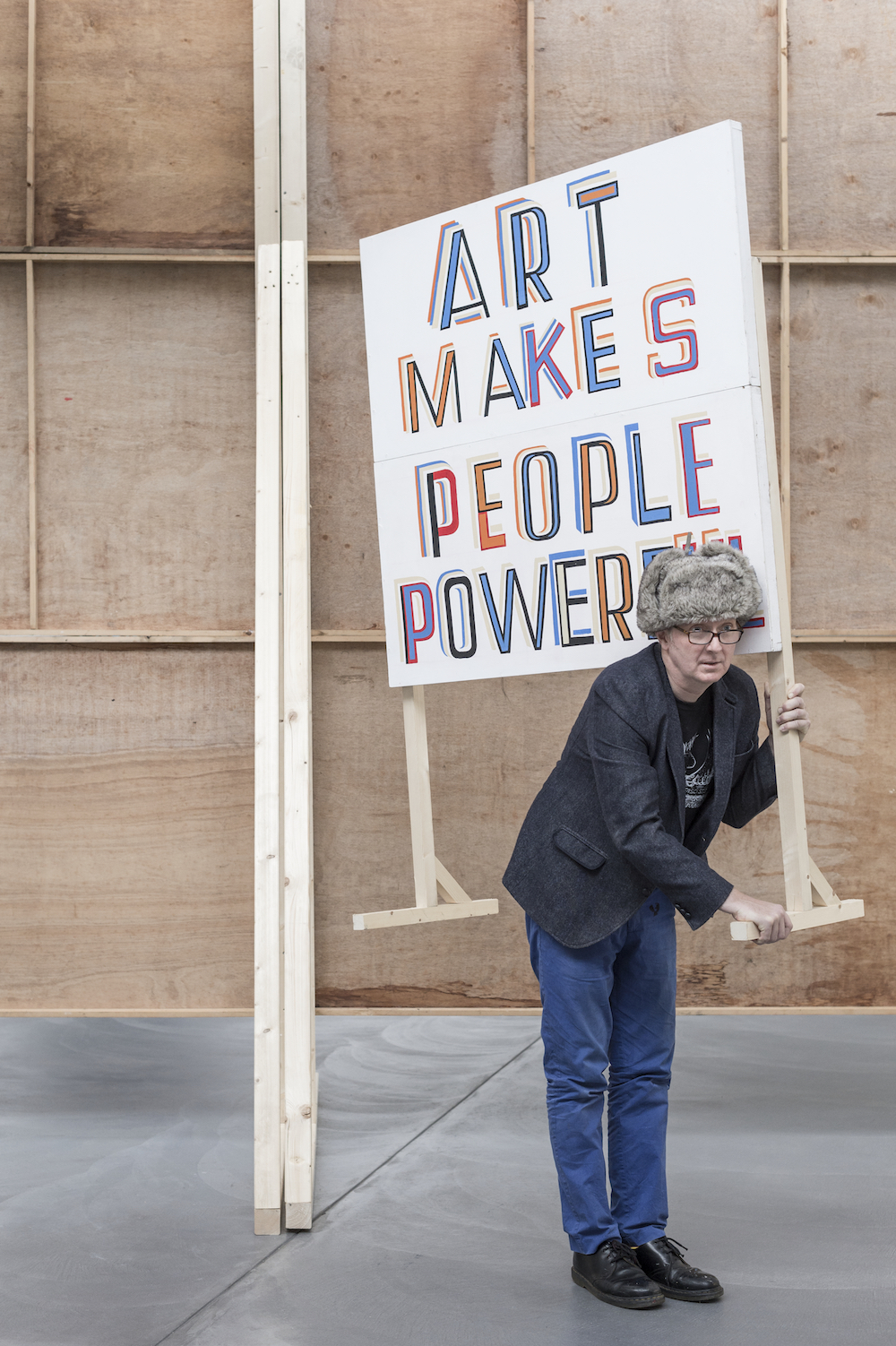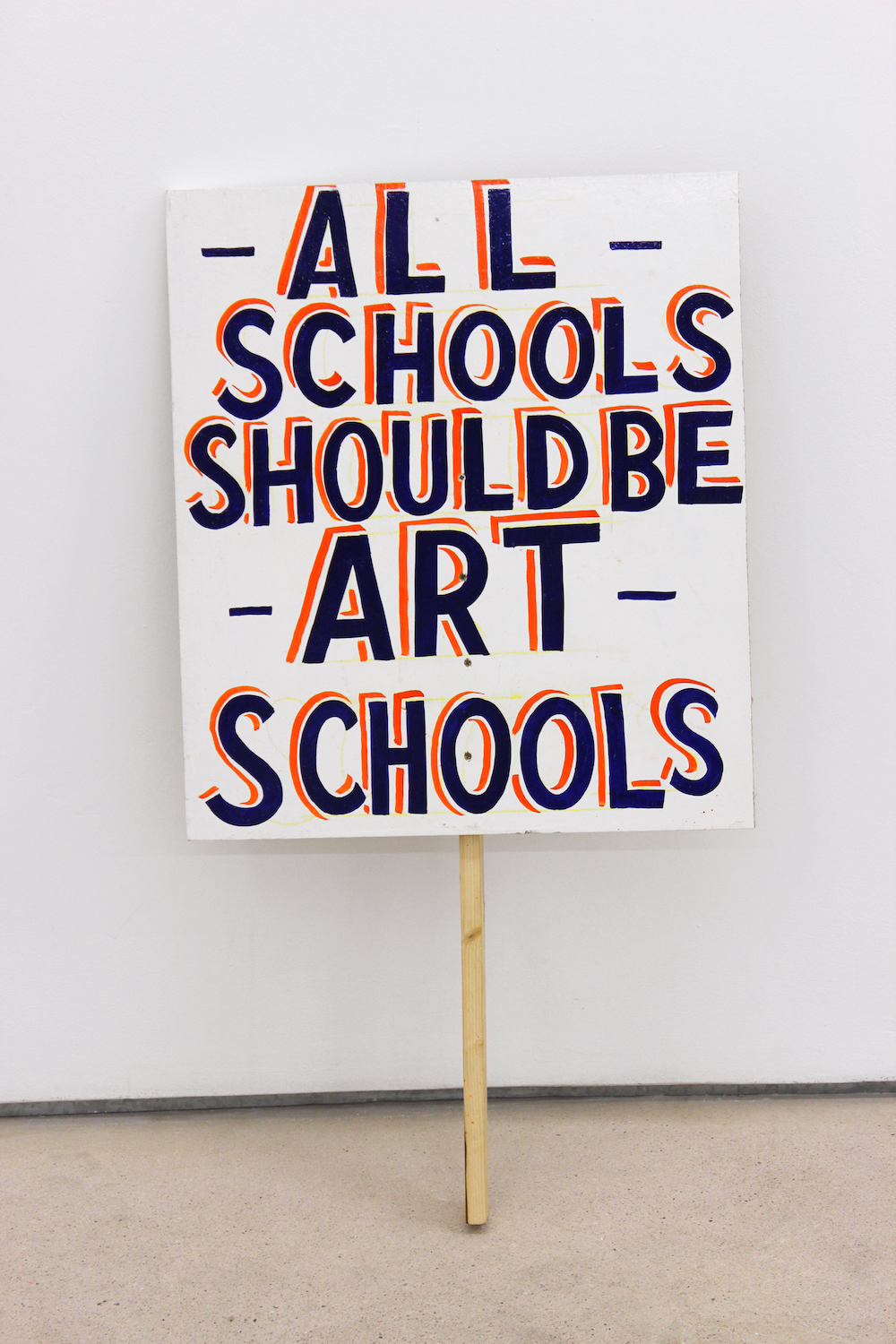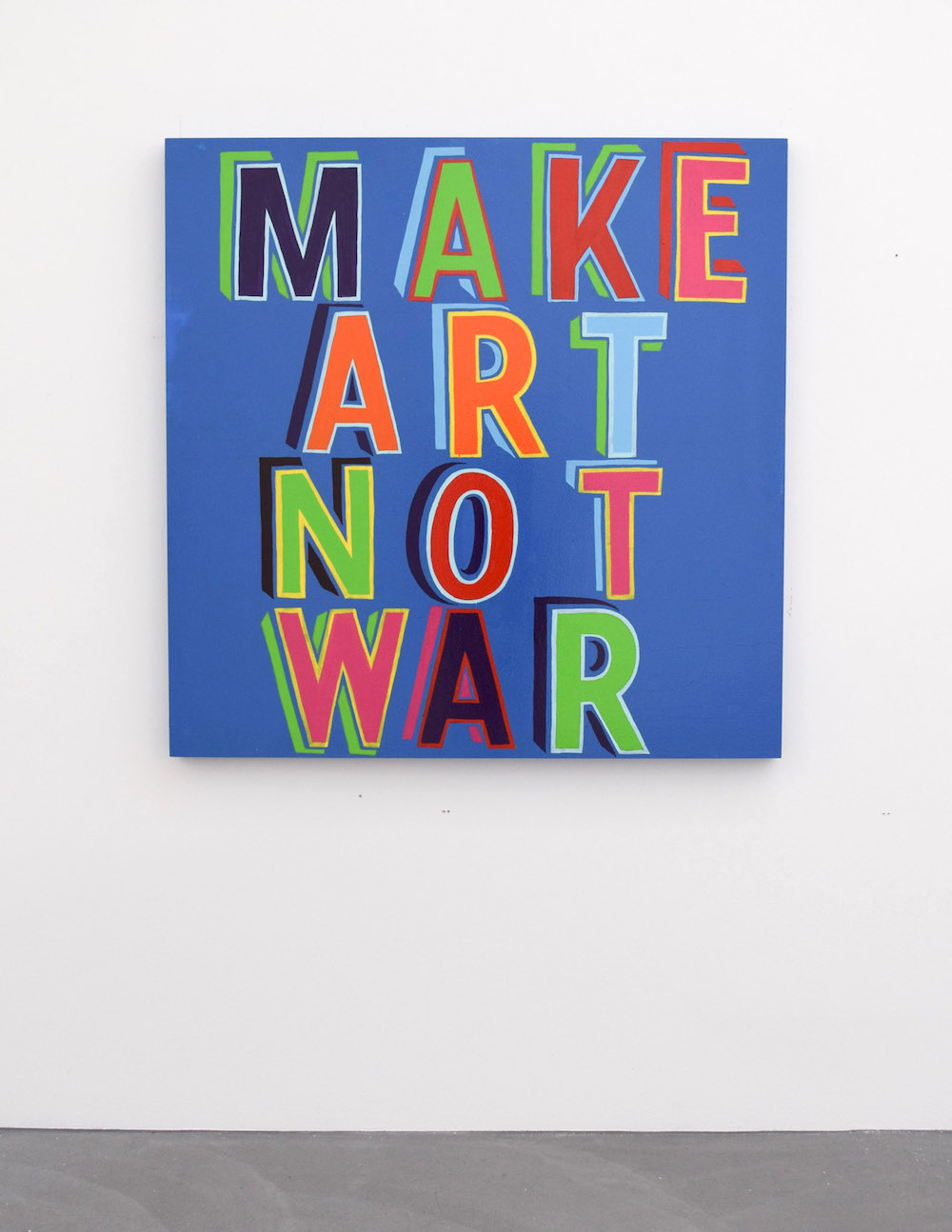
The last time Elephant bumped into you was at the Folkestone Triennial: what have you been doing since then?
I have been devising a series of instructions for the public to introduce them to ideas about art that ask the participant to engage in creative thinking. These will form an important part of my next show, The Whole World is an Art School!
at von Bartha in Basel (running from 3 February until 24 March).
Can you tell us about some of the interactive elements of this show, like “painting your own blob”—why do you want to turn the world into an art school?
My view is that the world is an art school and it is useful to think about the world as purposefully visual and educational. The purpose is about curiosity and empathy, and the means of communication are the senses. One of the instructions is “make a pink painting”. To make a pink painting is get to grips with pinkness, surface, materiality and intention.

Some of your earlier, very recognizable slogan works on wood are also going to be in this show—what purpose do slogans have in our world today, and do you think they work?
This Artist is Deeply Dangerous will be on show in Basel. It is the first time this large colourful and important work will be shown outside the UK. It is a transcription of an amazing article that appeared in the Guardian newspaper about Louise Bourgeois. I see my repainting of the article as a kind of re-reading of the text. It is a physical witnessing of the experience of reading and it is also a straightforward celebration of an extraordinary artist who shows us new aspects of the world which can be made into art.
You’re such a supporter of experimenting with your hands and playing with art—what has it done for you personally in your life?
My life is art. That is not a flippant remark. Everything I do is about a kind of invention and a curiosity about the world and humanity. I think language is magic and experimenting with it is joyful but also important. Important in the sense that the more people who are involved in being inventive and curious, the more likely it is we will be able to address hopefully the questions we face. That’s why education is important.

You also want to broaden the way art can be seen and used and make it more accessible—something we want to do with our magazine, too. How hard is it to get people to get over their fear of art, and particularly museums and galleries?
I think we exaggerate the difficulty and museums beat themselves up about this issue needlessly but it’s undoubtedly true that the visual arts lag behind theatre and music in encouraging a diverse community. My point about this is simple. Make exhibitions and university places that actively reflect the communities in society. We should do this in a numerical way. If 50% of the population is female then half the shows in galleries should be by females. Diversity should be approached in the same way. We are all taxpayers, public galleries should be more reflective of all our stories.
All images courtesy the artist and von Bartha, Basel





